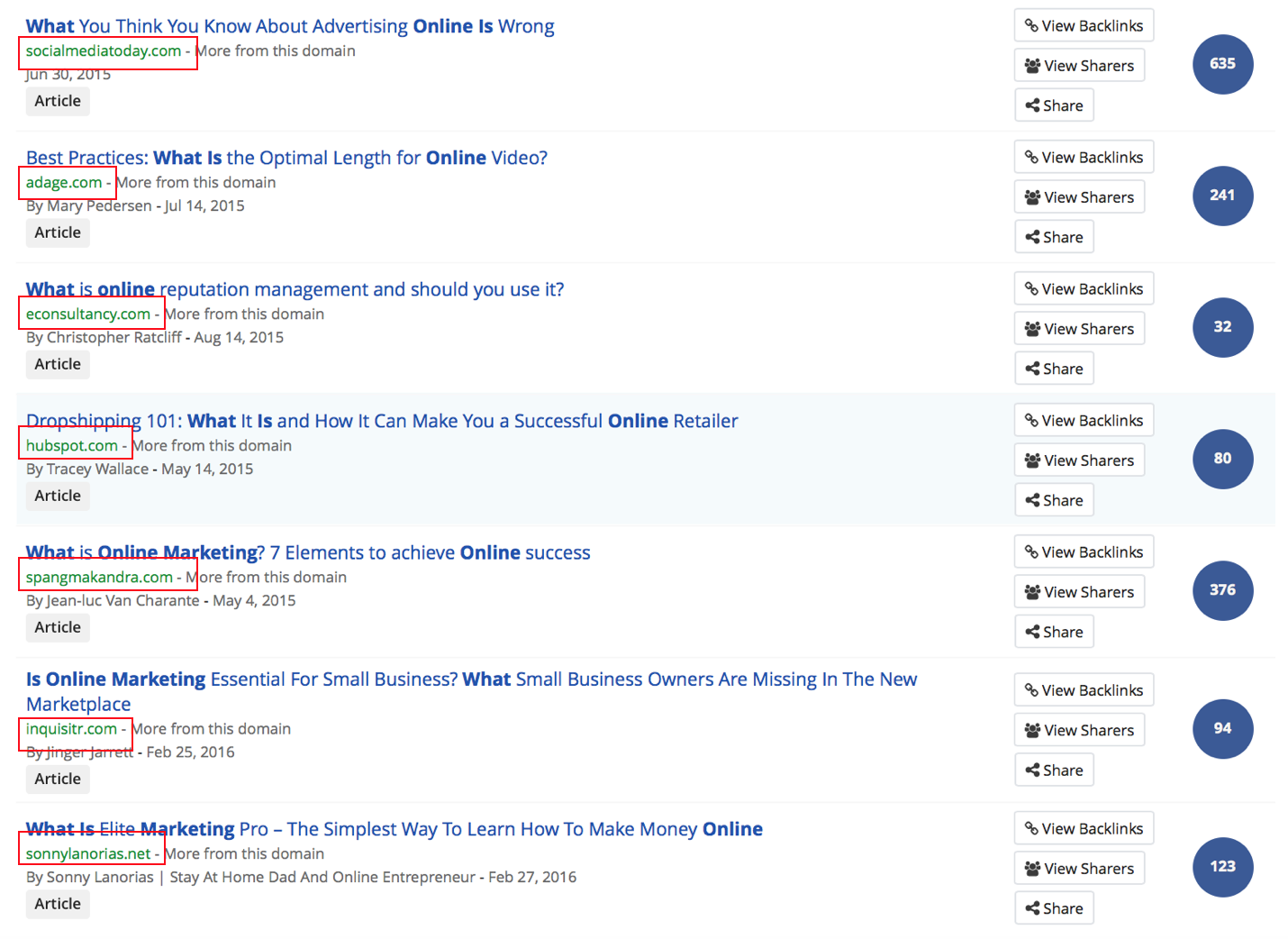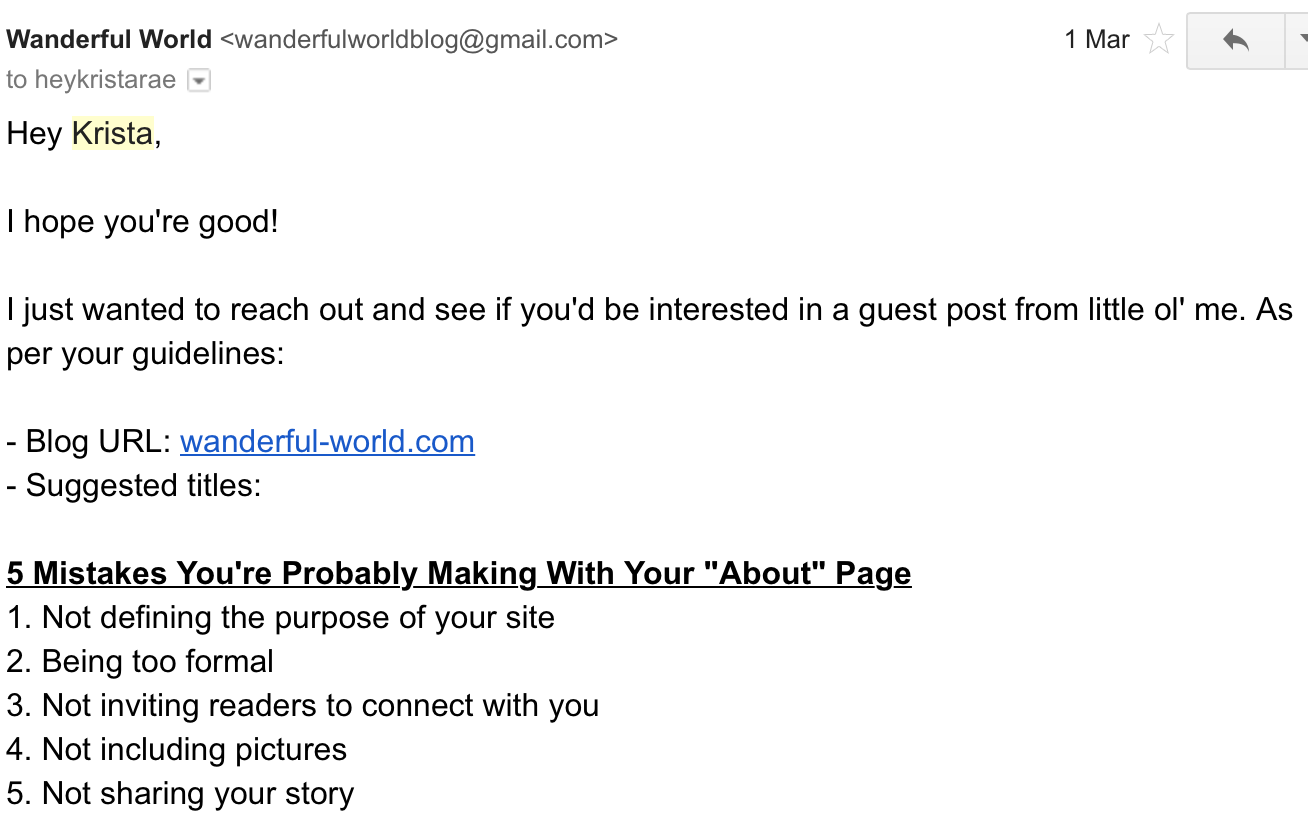This article was first published in May 2016. It was last updated November 27, 2024.
There’s nothing more demoralising than finding the perfect job and then coming across the dreaded “please send you portfolio” line.
I mean, it’s fine for seasoned freelancers who have a good stack of work behind them to send through. But what about those who have just started freelancing? What about those who have nothing to show except enthusiasm and sheer determination?
The truth is, most freelancing job ads will absolutely want to see your portfolio, or at the very least a couple of examples of your work.
Why? Because they want to know that you can do what you say you can, and that your work is the right fit for them.
And, when there’s a bucket-load and then some of competition out there, you’re going to need everything you’ve got to stand hand and shoulders above the rest.
Have I scared you yet? I hope not!
Because in actual fact, there are ways you can create a dazzling portfolio without ever having been paid for a piece of work (a.k.a. never having a client).
That’s right, with precisely zilch experience, you can start landing jobs you’ve always dreamed of simply by creating an awesome freelancer portfolio.
Let’s get stuck in, shall we?!
So, What Is an Online Work Portfolio, and Why Do You Need One?
As a freelancer, you must prove your expertise and present relevant past projects to land the prospective clients you want. Identifying your unique selling point (USP) is the first step toward creating a portfolio that wins you high-paying assignments.
How does a unique selling proposition actually manifest itself?
Use specific terms to convey your expertise rather than industry buzzwords like “digital marketer” or “freelance designer.” Particular occupations, such as “content marketer” or “logo designer,” provide you more leeway to make your imprint in established fields. These abilities will shape your reputation and identity over time.
How To Put Together a Portfolio for Freelance Work That Lands You Clients
When creating a freelance portfolio, it’s important to focus on three main areas: your unique selling proposition (USP), industry standards, and target audience.
When you have a firm grasp on your unique selling points (USPs) through your past projects, you can select the pieces of work that best represent you and your goals. Freelancers often make unsolicited pitches in an attempt to land new projects, but in the long term, it’s best to stick to what you know and focus on projects that will help you build upon your areas of expertise.
Think about the context of your sector and industry when deciding what defines your “best work” and “professional achievement.” I’ll give you an example:
For freelance writers, being published in a major publication would be a big deal.
Freelance wedding photographers may find that exhibiting a collection of testimonials from satisfied clients is just as vital as offering a library of chosen photographs.
Freelance graphic designers can set themselves out from the pack by mentioning the well-known companies they’ve previously worked with. You should read the rules of the game before you play.
Finally, it is important that you meet the demands of your ideal client. Explore the websites of the companies whose business you would most like to secure, and see what kind of work they value. Do you have the same vibe and aesthetic? Starting with the end in mind and working backward will help you produce and curate content that speaks directly to your target audience.
#1 Create Bespoke Pieces
This is the number one piece of advice I give budding freelancers who come to me for help. If you’re anything like them, you want to know how the heck you can start getting work without a single snippet of evidence to show you’re capable and willing.
The answer? Create bespoke pieces in the niches you want to work in and for imaginary companies that match your ideal client profile.
At this point, you want to create 2-3 pieces of content that show off your skillset, which means adding a little diversity to your offerings.
If you’re a writer, you could create a blog post, a piece of landing page copy, and a couple of social media blurbs. If you’re a designer, you could create a logo, a piece of print collateral, and a mock-up webpage.
Start by thinking about:
- Who your ideal client is: what is their style, tone, and philosophy?
- What kind of work you want to do: is it online content writing? Logo designing? Brand development?
- Where your skills lie: your freelancer portfolio is a selection of your best work, so make sure your skills shine through in the best light
The most important thing? Think about it as if you had been given a brief. Think about the aims of your pieces and how they would help your hypothetical client.
#2 Guest Post
Guest posting is not only a great way to get a collection of portfolio pieces together, but it’s also a superb way to get your name out there in front of an audience that might otherwise have missed you.

The byline from a guest post I did for MirandaNahmias.com
I’ve written more guest posts than I can count in the past few years, each of which has exposed me to a new audience and has added to my freelancer portfolio.
The best part? I’ve managed to slip into completely new niches, where I’ve built up a freelancer portfolio of relevant clippings simply by guest posting.
This time last year, I predominantly wrote travel pieces. I soon realised that the pay was minimal in this industry, and I actually enjoyed writing about marketing and online business more (and I had previous job experience in these areas). However, I had very few (if any) samples in this niche, which meant it was difficult for me to stand out to potential clients.
So I started guest posting on relevant sites and slowly began to gather a relevant body of samples that I could send to clients.
Start guest posting by:
- Identifying the niche you want to work in and collating a list of relevant sites that write about it (you can use tools like BuzzSumo to help you out here)

- Connecting with the site owners via social media or email
- Pitching one or two key ideas that would be a good fit for the site AND your portfolio
- Write your best content – remember, this is for your freelancer portfolio, so only the best of the best make the cut!

An email I sent Krista Rae about guest blogging
Making the Most of Your Guest Posts
Once your guest post has been published, the work doesn’t stop. Instead you now need to:
- Promote it by sharing the piece on your social media, website, and email newsletter to maximise its reach.
- Respond to comments and questions on the post to build connections with the publication’s audience.
- Make sure to highlight the piece in your online portfolio with context about the publication and its audience.
#3 Get Blogging
When I first started freelancing, I had absolutely zero client experience. I’d never worked to a brief and I hadn’t been paid for a piece of writing.
But I did have a trick up my sleeve. I’d been travel blogging for almost three years, which meant I had a whole host of posts I could share with potential employers. I’d not only written hundreds of travel-related posts on my blog, but I’d also written guest posts for other sites and started to grow a name for myself in the industry.
- A lot of freelancers overlook their blog as a chance to showcase their skills because it’s such a personal endeavour. However, it can be THE best place to show potential clients your skills, dedication, and knowledge on a specific topic.
#4 Use Your Website
If you’re serious about freelancing, I’m assuming you’ve got a website on the go where you can showcase your professional portfolio. You know, one that shows who you are, what you do, and that you’re open for business, right?!
Whether you’re a designer, a blogger, a writer, or a graphic designer, this is the perfect collateral to use in your online portfolio to attract prospective clients to you!
You’ve probably designed the website yourself if you’re a designer, and you’ve probably created the copy yourself if you’re a writer.
Include this in your online portfolio, as they are live samples of work that has, essentially, been “published” (even if they have only been published by you).
Make an effort to make your professional portfolio interesting, rather than simply a repeat of your “Employment history.”
Whether you’re communicating ideas through words, photographs, reports, or any other medium, you can increase the likelihood that your audience will pay attention if you present them with a winning portfolio website. Some examples of that are as below:
- Case studies: Share a brief account of a problem you overcame or an enterprise you helped.
- Snippets: Don’t worry if your project is too big or too complicated to use on its whole, just use representative samples. A preview or clip from a longer work may be included, or a summary of a document could be provided on your portfolio website.
- Screenshots: Make screenshots of your work, whether it be a spreadsheet, a research paper, an app, a social media post, or even the anonymized findings of a Google Analytics campaign.
- Results: Make a photo or video presentation of your accomplishments.
- Testimonials: Include a testimonial to have past coworkers or clients vouch for your abilities.
- Personal work samples: Samples included in a portfolio do not have to be from paid projects. If you don’t have any completed projects to show off, you could want to consider making a handful of examples that are still relevant.
You may not always be able to include past projects in your portfolio, whether it’s because you lack the necessary authority to do so or because the work itself is confidential. In this scenario, you can emphasize other parts of your profile and the portfolio to highlight your experience and expertise and find ways to make your testimonials more convincing.
Remember, most clients don’t care WHO you’ve worked with before, they just care about the skills you have and whether you can help them, and this is where your portfolio website can be a huge help in proving your expertise. They simply want to see a sample of what you can do to see if you could work well together.
#5 Offer Free Work
This is a contentious issue that’s been hotly debated for thousands of years (okay, maybe not that many, but still a lot). Should you work for free?
My answer to this is always: it depends.
I believe it’s okay to work for free if YOU’RE benefitting from the exchange as well as the client. For example, in this case, you’d be getting a sample piece for your portfolio – win-win, right?
This shouldn’t be a long-term strategy, though. Once you’ve collected one or two pieces, start charging for what you can offer – after all, you have proof that you’re awesome at what you do now.
#1 Create Bespoke Pieces
In recent years, social media platforms have evolved into powerful tools for freelancers to showcase their work and connect with clients.
For photographers for example, Instagram serves as a dynamic portfolio where they can share high-quality visuals, demonstrate their aesthetic, and engage with potential clients through captions, comments, and stories.
Similarly, LinkedIn has become indispensable for freelance writers, allowing them to post articles, share writing samples, and highlight their expertise directly to a professional audience.
Each platform allows you to create an ongoing narrative around your work, while showcasing the best of what you do and highlighting your credibility.
A well-curated social media portfolio creates a first impression that’s accessible, relatable, and aligned with the expectations of modern clients.
Where to find free work:
- Ask a local business owner: identify an awesome small business in your area that matches your niche and offer to create something for them for free
- Reach out to a blogger you admire and offer to help them out with something for free
- Create work for a non-profit: not only will you be gaining something for your freelancer portfolio, but you’ll also be helping out a great cause
Sidenote: At this point, working for free is better than working for pennies. Why? Because a lot of the low-paying gigs you find on UpWork, Craiglist and the likes won’t let you use the work you create in your freelancer portfolio.
Most of this will be “ghost” work, which means it will be published or used under the name of the company and, more often than not, you’ll have to sign something that says you’re not allowed to talk about it anywhere (including your freelancer portfolio).
#6 Give Additional Information for Each Portfolio Item
You should be as detailed as possible when describing your involvement in each project you include in your portfolio. Some examples of this might include assigning the portfolio item to the appropriate employment category and subcategory or adding appropriate skill tags.
Project descriptions should be kept short and engaging so use this space to tell the story of how the project came to be. I’ll give you an example:
- Detail the primary objective or output of your work.
- Justify your approach to the client’s issue.
- Focus on the knowledge, abilities, and resources that helped you meet the client’s needs.
- Don’t forget to include anything else that’s relevant to show how well you accomplished the project’s objectives.
One or two brief paragraphs should do the trick, so don’t ramble!
Your portfolio items can also be connected to completed tasks. This makes it easier to see the relationships between your projects, portfolio items, client feedback, and client ratings, all of which can serve to vouch for your skill and reputation in the eyes of potential clients.
#7 Update and Edit Your Portfolio Regularly
There’s a good chance that your portfolio includes work that you’ve since outgrown. You should avoid showing potential clients old work that doesn’t do justice to your current level of expertise and proficiency.
To attract prospective clients with the most in-demand skills and experience, it’s best to either update outdated project descriptions to reflect this shift or eliminate them entirely. If you believe your previous projects are still relevant, you can give them a new lease on life by updating their presentation. If not, you should take them off your list of portfolio samples to make a place for new ones.
Pro Tip: Update your portfolio regularly. Bringing more experience and development to the table with each assignment you take on will increase your market value as a professional. You want your clients to see this development on your portfolio site, so don’t be hesitant to promote your best work at all times. Upload the screenshot, copy and paste the link, and point it out to the next client who comes your way as soon as you receive permission to include the completed project in your portfolio.
The Logistics of Creating a Freelancer Portfolio that Rocks
How Many Pieces Should I Have?
You want to aim to have at least 3 pieces you can send to potential clients, as I’ve found this is the usual amount they go for.
These could be created through a variety of the methods mentioned above (and I’m betting you probably already have three samples sitting somewhere on your blog, website, or hard drive, right?!).
If you see a job you really want to go for but have nothing relevant, you can always add a bespoke piece to your freelancer portfolio before you apply – every little helps!
How Should I Lay Out My Portfolio?
I’ve seen hundreds of portfolios all laid out in different ways. Some are simple lists, others are well-designed artistic pieces (almost like artworks in themselves!).
It completely depends on the kind of client you want to attract, what pieces you have, and your web skills.
The most important thing to remember is that your freelancer portfolio is easy to navigate and clear for clients to read. Use lots of white space and, if possible, break it down into sections where you can put separate styles of work or different projects.
A Final Note…
While your freelancer portfolio will be pivotal in whether you land gigs or not, it’s not ALWAYS about the work you’ve done before.
In fact, a large part of client acquisition depends on your personality and whether you’re a good fit for the brand. It depends on how you present yourself in your emails and pitches. It depends on your past experience and hobbies. It depends on your rates, your availability, and your turnaround time.
There are so many other factors at play, but if you’ve got your freelancer portfolio on point, you’ll stress less about the other elements.






Great tips! I’m just about to start building up my portfolio, to hopefully venture into the world of freelance very soon. I’ll definitely take your advice!
Awesome! Glad this could help you, Bridget!
I love #1 – Bespoke pieces are important, no matter what stage of business you’re in! If you write for the right clients, those clients will always be able to find you. Thanks for the tips!
So true, Tamara!
Love this post! And yay a little shoutout to me, thank you 😀 I’m definitely going to be using BuzzSumo really soon to search for guest posting opportunities, as I’m preparing to launch something in August/September.
Haha my pleasure, Miranda! Exciting about your launch – can’t wait to see what you’ve got planned!
I do have one question – if you create bespoke pieces, how do you display them in an online portfolio?
Icy Sedgwick recently posted…Can a creative rule system boost your creativity?
Great article! I’m a newbie! To send a portfolio to someone, are your pieces of work in a file, attached and then emailed? Do you send the pieces separately as an attachment or pasted in the body of the message? Thanks!!
Hey Carolyn! Glad you liked the piece 🙂 if your pieces aren’t published yet, I would send them across in a PDF format either as a link or an attachment. If you have the time, it might be worth uploading those pieces to a blog site (either your own or somewhere like Medium – which is free) so you can send across “published” links. Hope this helps!
These are great tips Lizzie.
Based on my experience, I created my portfolio by guest posting to other blogs. Just like what you have said, this is one of the best way to build your authority. Guest posting will not just build your authority but it will also drive a lot of traffic back to your blog when people liked your article. These are win-win situations 🙂
All the Best,
Jan Limark | Brotherly Creative
I never thought of BeSpoke.com before for anything pertaining to freelancing. I just might have to look into that. 🙂
DNN recently posted…#PortionSizing: Managing #PortionSizedFood for Long Term #WeightLoss